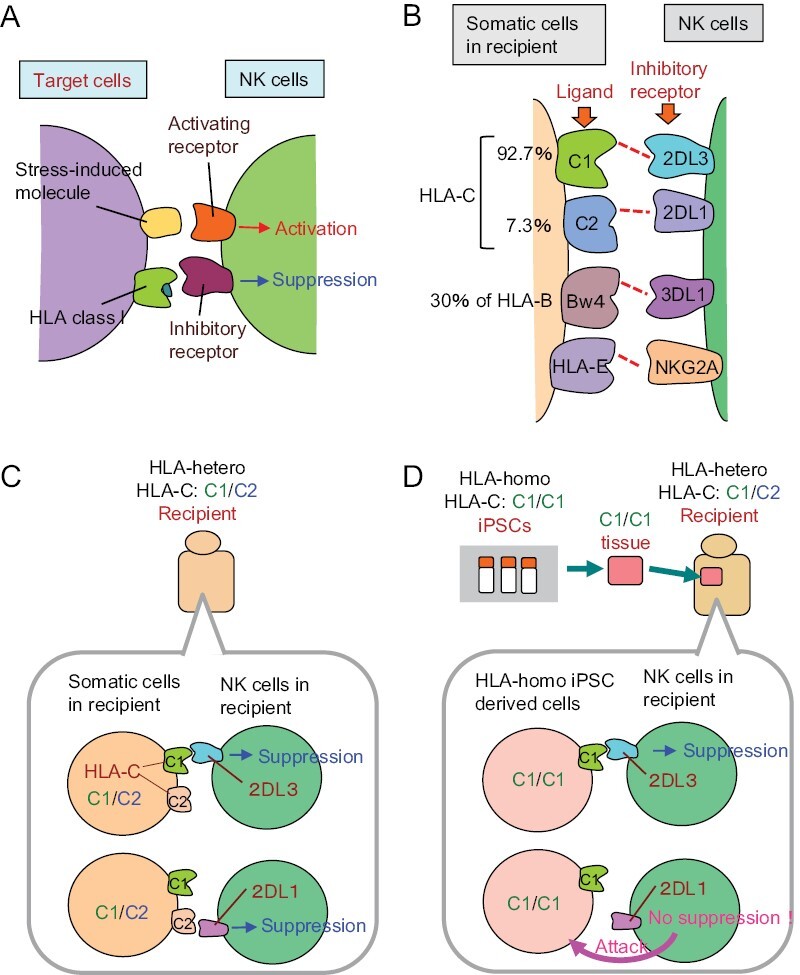Figure 4.

The mechanism of NK cell-based immune responses. (A) NK cells sense molecules expressed on cells under stress, and attack them. On the other hand, inhibitory receptors of NK cells sense HLA class I molecules and generate inhibitory signals, serving as a safeguard system. (B) Inhibitory receptors and ligands of human NK cells. HLA-C molecules function as the major ligands of inhibitory receptors expressed on NK cells. HLA-C molecules can be classified into two types: C1 and C2. The receptors for C1 and C2 are KIR2DL3 and KIR2DL1, respectively. Some HLA-B epitopes (~30%), namely HLA-Bw4 ligand, serve as a ligand for KIR3DL1. HLA-E acts as a ligand for NKG2A. (C) NK cells in recipients carrying HLA-C1/C2 are inhibited by the ligand of either HLA-C1 or -C2 expressed on somatic cells. (D) It is predicted that HLA-hetero C1/C2 recipient NK cells may sense the absence of the C2 molecule on the graft when the graft derived from HLA-homo iPSCs carrying HLA-C1/C1 is transplanted, resulting the killing of the graft.
